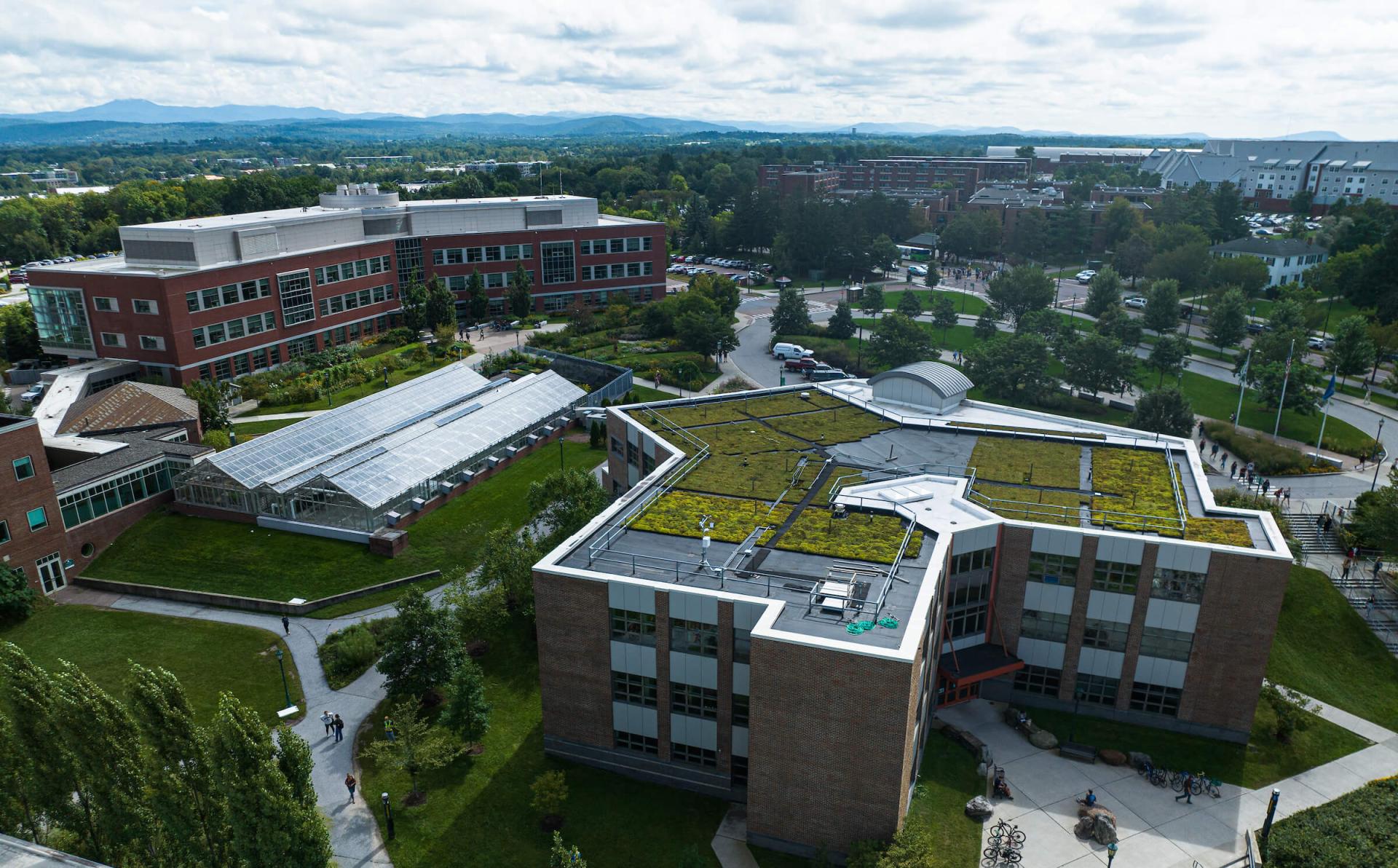In 2012, the School completed reconstruction on a green renovated Aiken Center, a facility with U.S. Green Building Council LEED Platinum status—their highest ranking.
More videos about the Aiken Center and the greening of the Rubenstein School
What Makes Aiken So Green?
- LEED Platinum building rating signifies one of the greenest renovated buildings in the nation.
- Learning lab educates students about green building attributes.
- Green roof tests micro-watershed strategies for stormwater management.
- Low-flow fixtures use much less water than those in a similar-sized conventional building.
- High performance building envelope & windows provide 62% more energy efficiency than original.
- Natural ventilation and lighting.
- Environmental/energy monitoring systems provide efficiency data via web.
- Local, renewable, recycled, recyclable building materials & furnishings include FSC-certified wood from UVM Jericho Research Forest.
- More than 30% decrease in energy use in RSENR buildings since 2014.
- Student-funded alternative solar energy provides half of electrical energy use.
- Net zero energy & additional solar energy efforts underway to offset all energy use.
- Stormwater to gray water efforts underway to flush toilets & reduce potable water use by 50%.
- Eco-design makerspace created from converted Eco-Machine wastewater treatment system.
Showcasing Natural Components
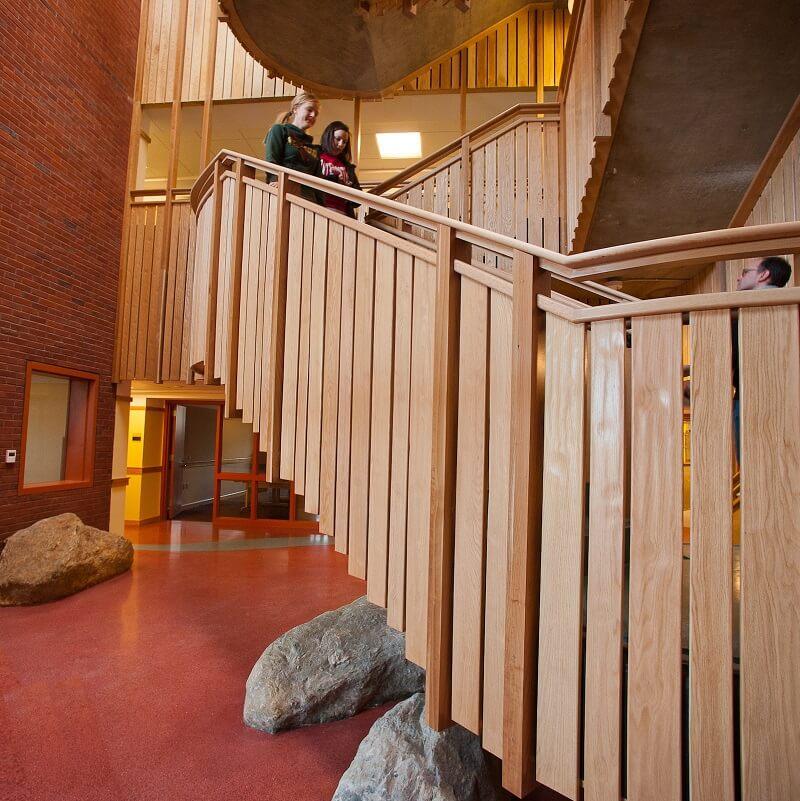
Each floor of the Aiken Center represents a component of our natural world, the Earth. The first floor, which houses naturally lit and comfortably ventilated classrooms, a 100-seat lecture hall, student lounge, and brick and wood-trimmed atrium, represents the red core of the Earth.
Symbolizing the Earth's Surface
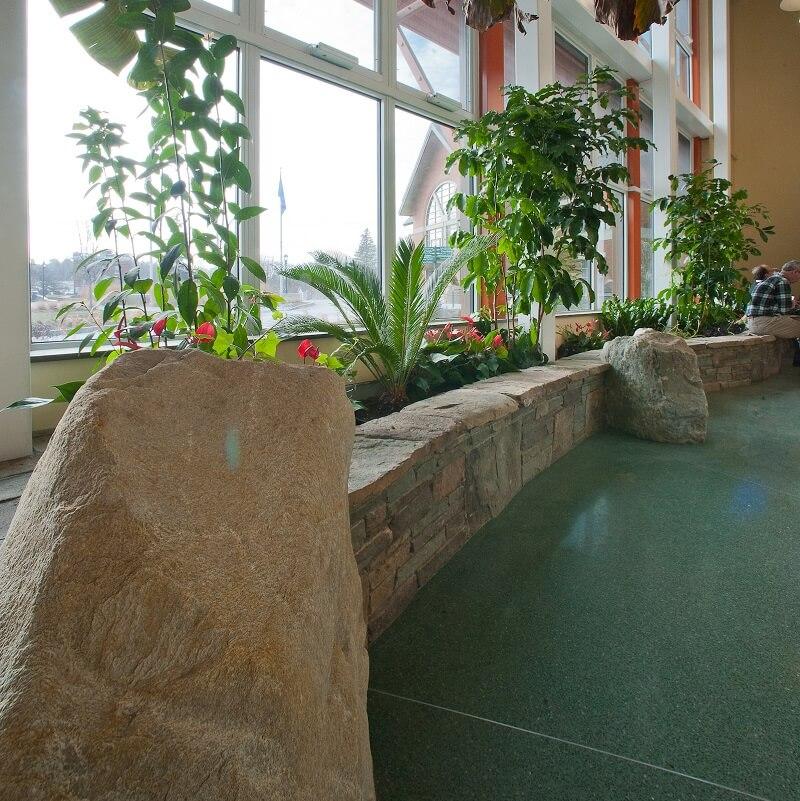
Spiraling up the central staircase, you emerge onto the second floor which symbolizes the Earth's surface with the lush green of forests and the deep blue of rivers running through the hallways' terrazzo flooring. The second floor is home to the Dean's Office, faculty and staff offices, laboratory style classroom, and Spatial Analysis Laboratory. A glass solarium on the south side of the building is a warm, welcoming entrance to the Aiken Center and provides casual meeting areas formed by stonewalls and tropical vegetation.
Integrating Research
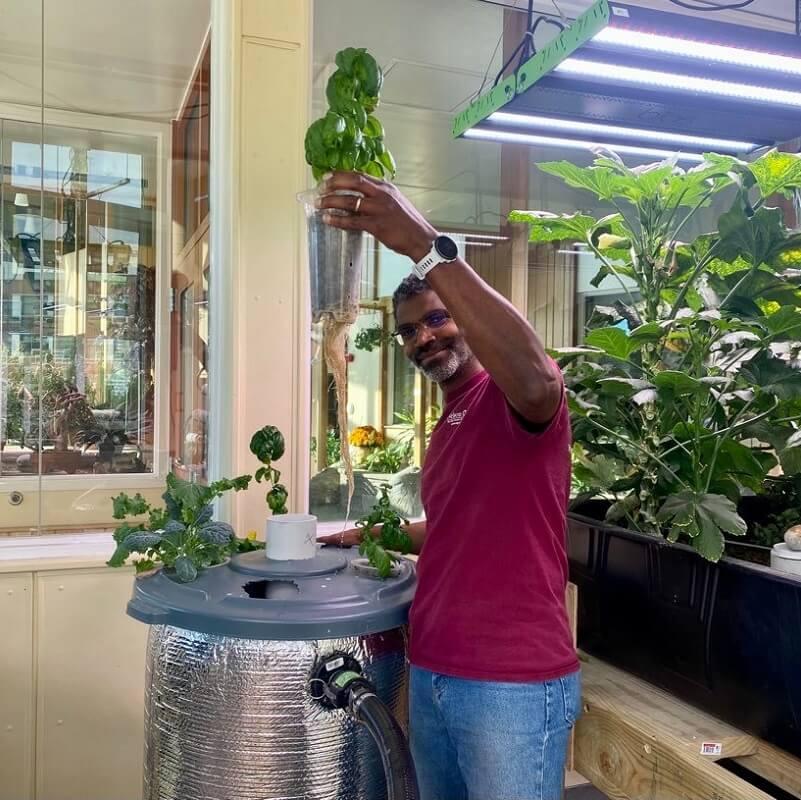
At the eastern end of the solarium, a window looks into the Eco-Design Makerspace. Here, faculty and students research improvements to wastewater treatment and nutrient recycling and recovery to grow plants, mushrooms, and fish.
Tying into the Earth's Atmosphere
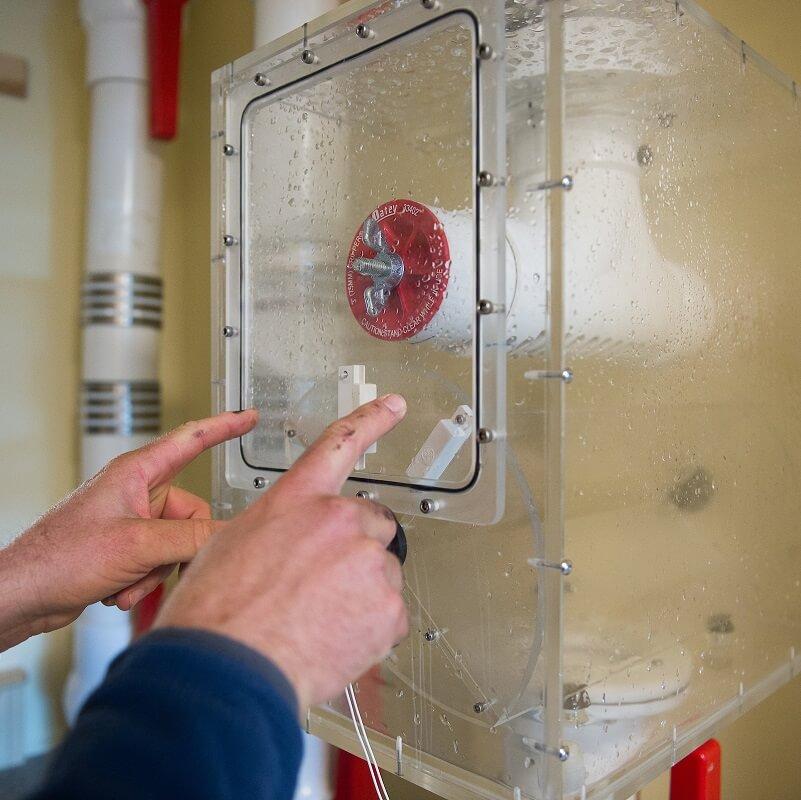
On up to the third floor, trimmed in the blues of the Earth's atmosphere, you will find faculty and staff offices, graduate student space, and conference rooms. Throughout the building, beautifully finished wood trim made from trees harvested at our Forest Stewardship Council- (FSC-) certified Jericho Research Forest links us closely to the forest. Tipping buckets, lining a third floor hallway, fill with rainwater and snowmelt from the roof to help us learn how to manage and reduce stormwater run-off.
Greening the Rooftop
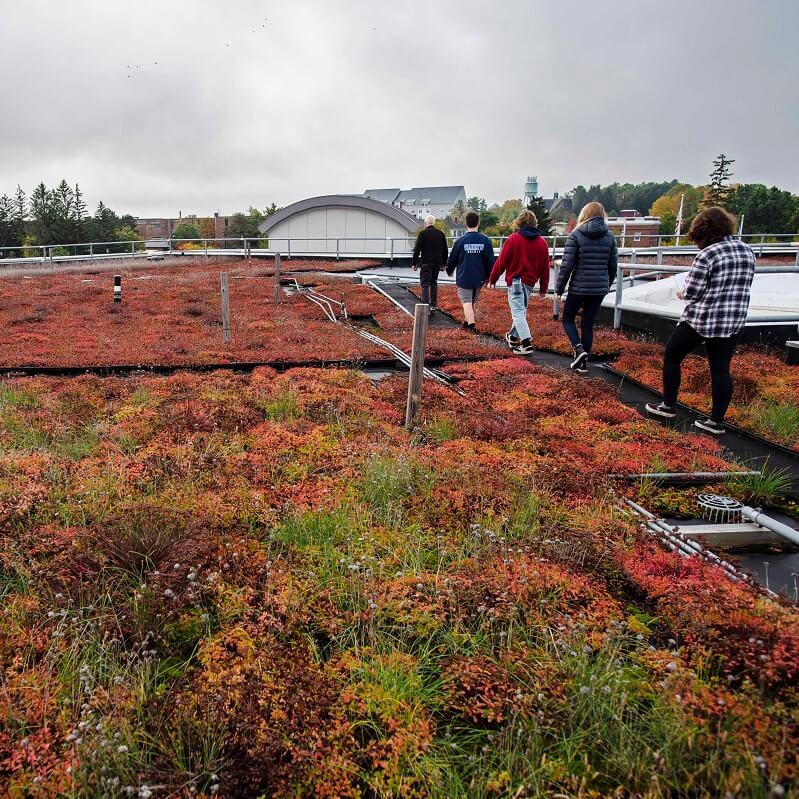
Finally, the Aiken Center's green roof comprises eight small watersheds, six of which are planted with flats of vegetation. Faculty and students use the roof and its drainage water to test stormwater management strategies.
